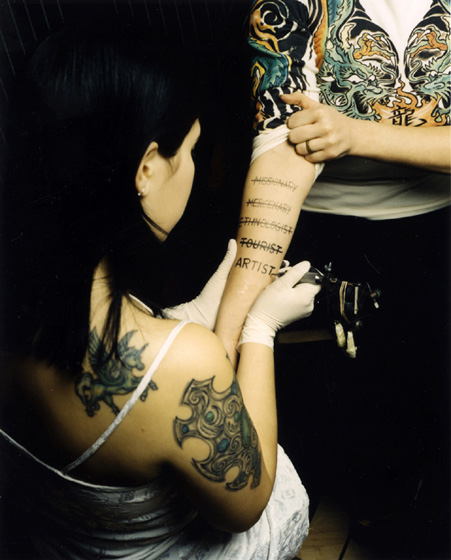
|
 |
The self-portraits thus demonstrate a proposition which is central to the entire oeuvre namely, that what is being investigated is not
simply something ‘out there’ in the world which the camera merely records, but aspects of the artist/photographer herself and her culture. At the same
time as the construction of photographic reality is put up for discussion, the she is (visually) incorporated as part of the experiment, part of an interrogatory
process. In other words, part of a shared subject / photographer / on-looker cultural configuration.
Wild Places is superficially about tattooing. My Shorter Oxford Dictionary (1986) defines tattoo as: “To make permanent marks
or designs upon the skin by puncturing it and inserting [...] pigments. Practiced by various tribes of low civilisation, and by individuals
in civilised countries.”
|
Here we see a female tattoo artist at work. The needle will shortly finish the last in a series of (deleted)
items. Considered historically, it is a question of territoriality - the first two (mercenary, missionary) have guaranteed the next two (ethnologist,
tourist) their freedom of inquiry and travel by using force and/or persuasion. We view the artist’s interrogatory product and in the knowledge that,
however much of a construct history may be, its consequences-real actions in a real world-cannot simply be deleted. The list also has the effect of placing
the artist/photographer in a critical, reflective stance but one located within mainstream Western society.
While the list of crossed-out ‘occupations’ could be read in a number of ways on its own, the definition above suggests
that it should be considered within the context of cultural appropriation and the marketing of ethnic goods - with all their exotic associations - in
our rapidly globalising world. |